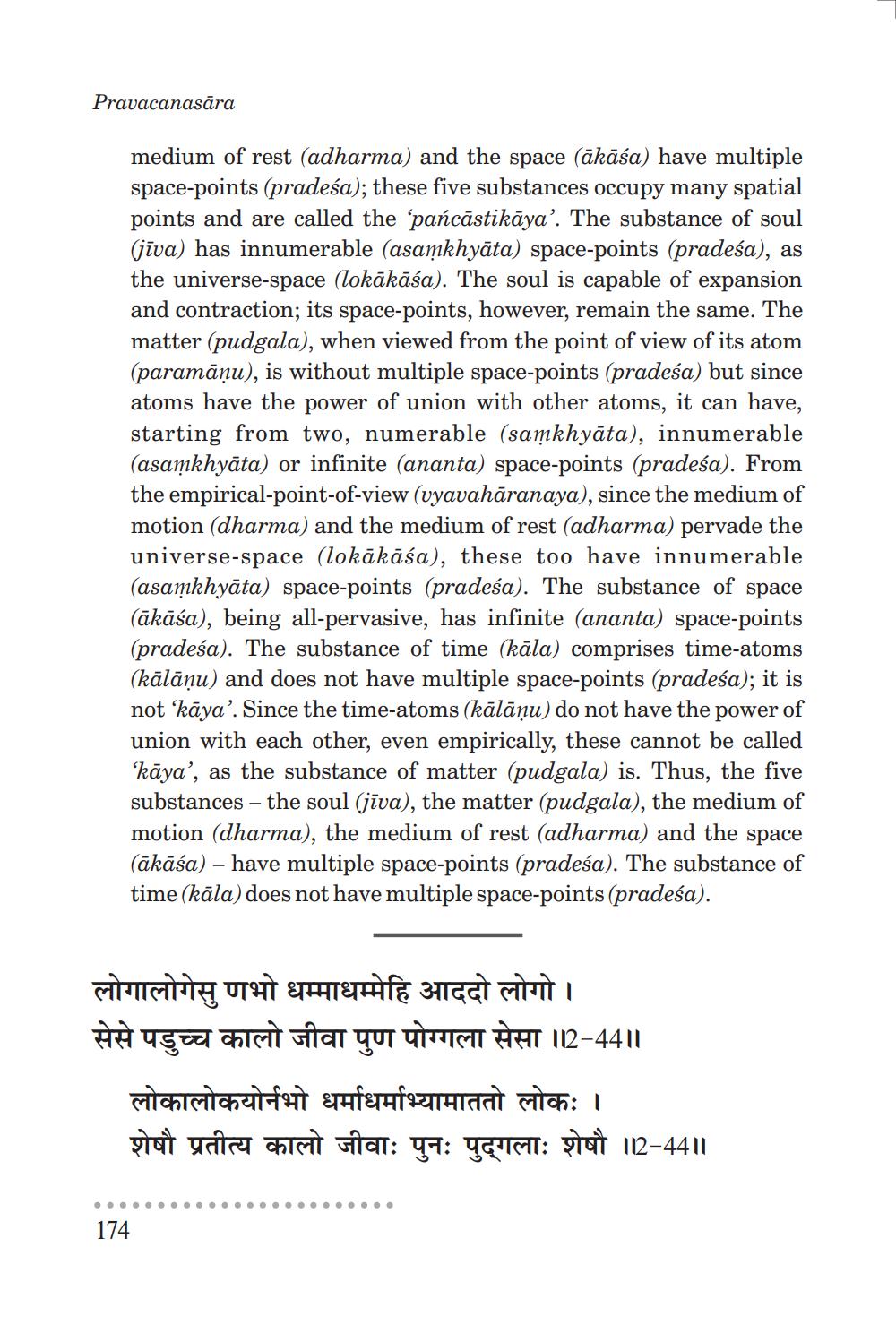________________
Pravacanasāra
medium of rest (adharma) and the space (ākāśa) have multiple space-points (pradeśa); these five substances occupy many spatial points and are called the 'pańcāstikāya'. The substance of soul (jīva) has innumerable (asamkhyāta) space-points (pradeśa), as the universe-space (lokākāśa). The soul is capable of expansion and contraction; its space-points, however, remain the same. The matter (pudgala), when viewed from the point of view of its atom (paramāņu), is without multiple space-points (pradeśa) but since atoms have the power of union with other atoms, it can have, starting from two, numerable (samkhyāta), innumerable (asamkhyāta) or infinite (ananta) space-points (pradeśa). From the empirical-point-of-view (vyavahāranaya), since the medium of motion (dharma) and the medium of rest (adharma) pervade the universe-space (lokākāśa), these too have innumerable (asamkhyāta) space-points (pradeśa). The substance of space (ākāśa), being all-pervasive, has infinite (ananta) space-points (pradeśa). The substance of time (kāla) comprises time-atoms (kālāņu) and does not have multiple space-points (pradeśa); it is not ‘kāya'. Since the time-atoms (kālāņu) do not have the power of union with each other, even empirically, these cannot be called ‘kāya', as the substance of matter (pudgala) is. Thus, the five substances – the soul (jīva), the matter (pudgala), the medium of motion (dharma), the medium of rest (adharma) and the space (ākāśa) – have multiple space-points (pradeśa). The substance of time (kāla) does not have multiple space-points (pradeśa).
लोगालोगेसु णभो धम्माधम्मेहि आददो लोगो। HÀ Ugoe oli oila YUT UIMIMI ÀMT 112-4411
लोकालोकयोर्नभो धर्माधर्माभ्यामाततो लोकः । stat unica chi stal: ya: yg'im: stot 12-4411
174




